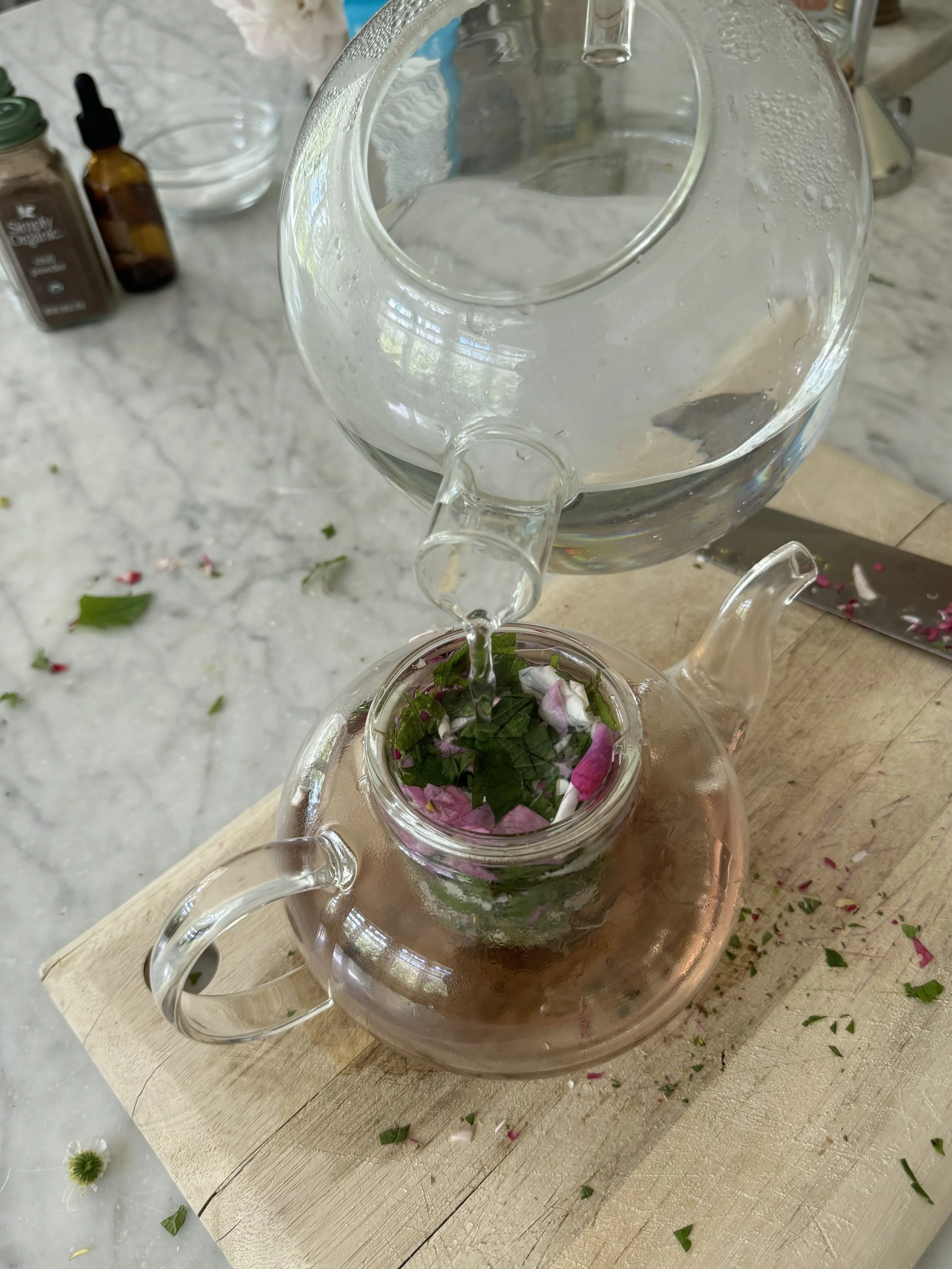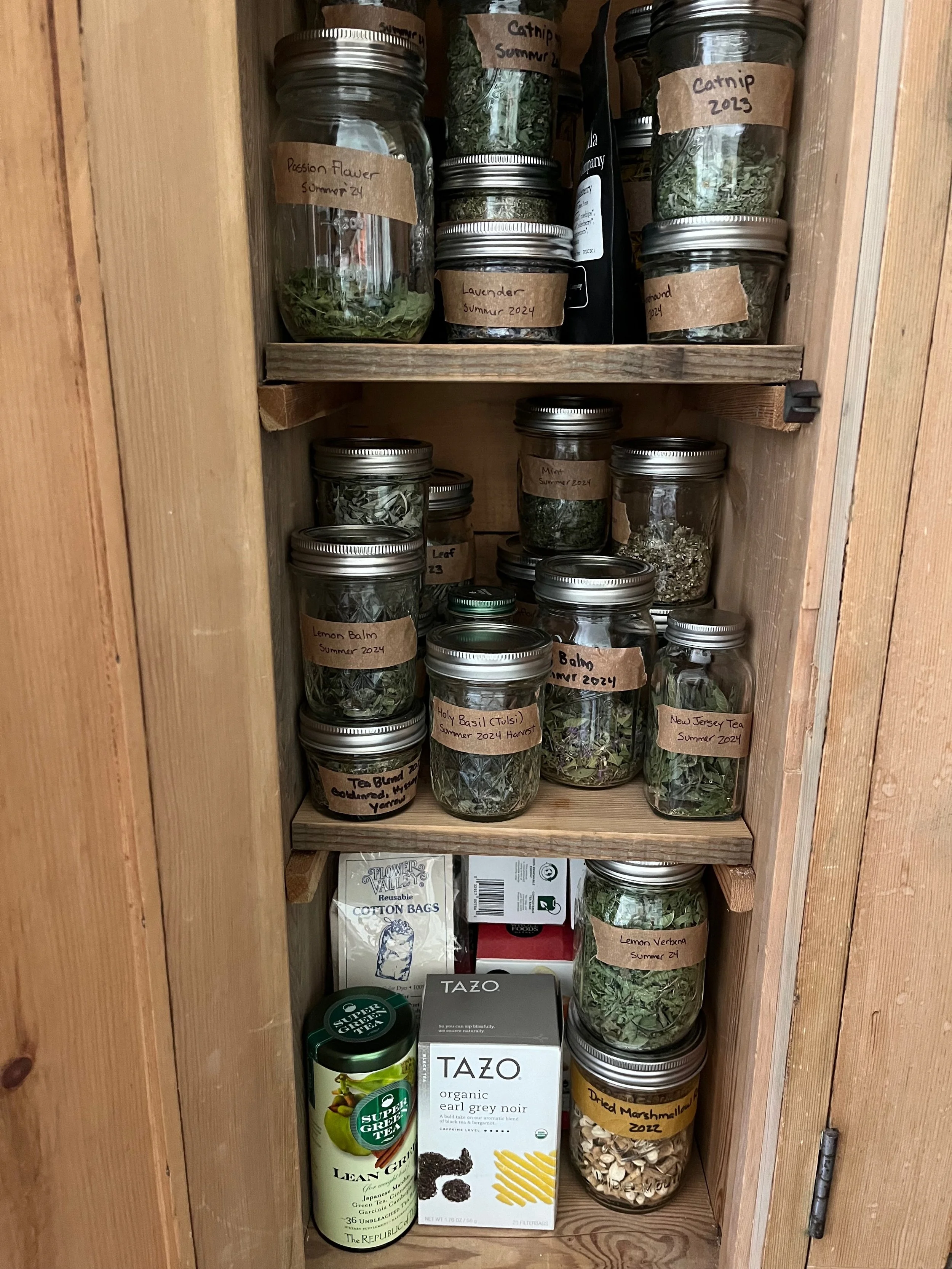Fresh Herbal Tea
Several years ago I was losing my patience in some unremarkable beige waiting room and I happened upon an interesting article in a popular home and garden magazine. They were writing about making homemade herbal tea. The word they used was tisane, which describes infusions of leaves, flowers, roots, and seeds in hot water, using plants other than the traditional Camellia Sinensis tea plant. I had never spent much time thinking about what was in the paper herbal tea bags I bought at the store. The article suddenly connected me to the seemingly ordinary plants crowding the beds of my in-town cottage garden. The purple coneflowers decorating the fence line were actually Echinacea Purpurea! I had a few boxes of Echinacea tea in the pantry. I had been serving the boys cups of this tea with extra honey since they were very small and inclined to curl up on the sofa in their penguin pajamas and binge-watch cartoons when feeling under the weather.
After my waiting room enlightenment, I started making Echinacea tea with the fresh leaves and flowers cut from our garden and eventually learned to also dig a small section of the root in the fall. Then the garden gates flew wide open and all kinds of plants made it into our tea pot. We enjoy tea made from fresh leaves and flowers in the spring and summer. I dry some of the leaves and flowers to add to teas made with roots later in the fall and winter. I still buy boxes of tea for plants I don’t grow, but now my tea cupboard looks like this…
Tea has turned out to be a delicious way to diversify our diet and add a soothing ritual to our hectic days. A range of water-soluble plant compounds, including polyphenols, are infused into a properly steeped cup of tea. Many people are hesitant to add weird new plants to their plates, but I hope more will be open to a cup of hot or iced tea.
Case and point, my kids WILL NOT eat stinging nettles even though I have repeatedly explained that cooking the plants render the stinging hairs harmless and that nettles are one of the most nutritious plants around. Nope, they say. So one day I threw the leaves into the teapot. The first attempt was straight nettles. My oldest took a sip and said, “Tastes like grass…I be sippin’ the earth!”. He wasn’t psyched to drink all of it. I’ve since learned to blend the nettles with mint or lemon balm and the boys happily guzzle a cup full, with honey of course.
Harvested plants lose nutritional value over time and under certain storage conditions. Drying plants is an efficient way to preserve plant material, but light exposure needs to be avoided, air flow sufficient and room temperature very warm to retain the most beneficial properties. Making tea from fresh garden plants is easy and can have a major advantage over dried herbs shipped overseas and stored for long periods of time. I have been guilty of keeping dried tea for too many years. The tea definitely loses its color and aroma and surely its flavor and nutritional punch.
Be adventurous and try making some tea fresh out of your own gardens. Please make sure to positively identify any plant you might use and obviously only choose edible plants!
Common garden plants that can be used to make tea include:
Mint
Thyme
Lemon Balm
Lemon Verbena
Bee Balm
Hyssop
Echinacea
Rose petals
Sunflowers
PS. This review published in Helyion open access science journal offers a comprehensive overview of Stinging Nettles for those interested.


